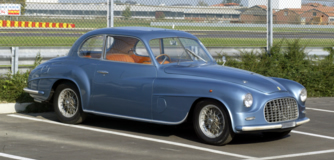|
all with their own interpretation of how they felt a Ferrari should be coutured. Apart from Stabilimenti Farina, Bertone, and Carrozzeria Touring, the latter having bodied the first 166 Sport coupé for the 1948
Turin Salon, there were also examples of coachwork from the design houses of Ghia and Finale.
The Carrozzeria Touring examples were the most numerous, and bore a strong family resemblance to the style of their 166 MM
barchettas, albeit on a longer wheelbase chassis, and with a smoothly curved three box coupé body. The examples from Stabilimenti Farina and Ghia were very similar in overall shape, featuring fastback coupé bodies that appear
slightly heavier in comparison to the Touring interpretation, whilst the Stabilimenti Farina cabriolets were virtually identical to the coupés from the waist down, and featured a folding canvas soft top, as did the Bertone
bodied car. The Finale styling offering was also a fastback coupé, but of a much lighter design than those from Farina and Ghia, providing a stronger sporting image, which made them second in popularity, in terms of numbers
produced, to the Touring version.
Although any two models from one coachbuilder might appear identical, each body was hand-built, and the client had the opportunity to indulge in his or her personal styling whim, so
that virtually every car was an individual, and there would often be numerous detail differences, perhaps in the radiator grille design or lighting layout, between one car and another from the same source. Although the Inter
series were built as road cars, many owners used them frequently in competition, and they acquitted themselves well, despite the heavier bodies and full interior trim, relative to their sports racing peers. As the Inter series
were road cars, front and rear bumpers were part of their apparel, the Touring-bodied cars having vestigial appendages normally faced with rubber strips, whilst those on the Ghia, Farina, and Finale-bodied examples were much
heavier chrome-plated adornments.
The mechanical layout on a 2420 mm wheelbase tubular steel chassis was very similar to the 166 competition models, with a 2-litre V12 aluminium engine coupled with a 5-speed gearbox
driving through a rigid rear axle. The engines on these models had a twin distributor and coil ignition system, and were fitted with a single twin choke carburettor as standard although a triple twin choke carburettor set-up
could be specified as an option to obtain extra performance. These were the only road production Ferrari models of the period available with disc type road wheels, as an alternative to the more popular and sporting wire wheels.
In either instance they had Ridge type splined hubs, sometimes under a chrome hub cap on the disc wheels.
Engine
- Type front, longitudinal 60° V12
- Bore/stroke 60 x 58.8 mm
- Unitary displacement 166.25 cc
- Total displacement 1995.02 cc
- Compression ratio 6.8 : 1
- Maximum power 66 kW (90 hp) at 5,600 rpm
- Power per litre 45 hp/l
- Valve actuation single overhead camshaft per bank, two valves per cylinder
- Fuel feed single Weber 32 DCF carburettor
- Ignition single spark plug per cylinder, two coils
- Lubrication wet sump
- Clutch single-plate
Chassis
- Frame tubular steel
- Front suspension independent, unequal-length wishbones, transverse leaf spring, hydraulic shock absorbers
- Rear suspension live axle, semi-elliptic springs, hydraulic shock absorbers, anti-roll bar
- Brakes drums
- Transmission 5-speed + reverse
- Steering worm and sector
- Fuel tank 72 litres
- Front tyres 5.50 x 15
- Rear tyres 5.50 x 15
Bodywork
- Type coupé, cabriolet, 2+2 or two-seater
- Wheelbase 2620 mm
- Front track 1250 mm
- Rear track 1200 mm
- Weight 900 kg (dry, coupé)
Performance
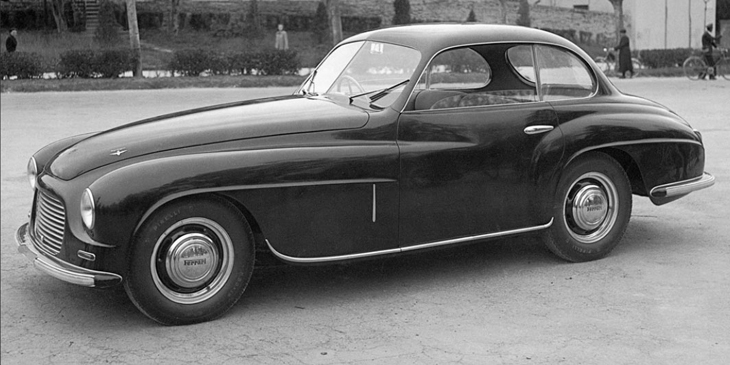
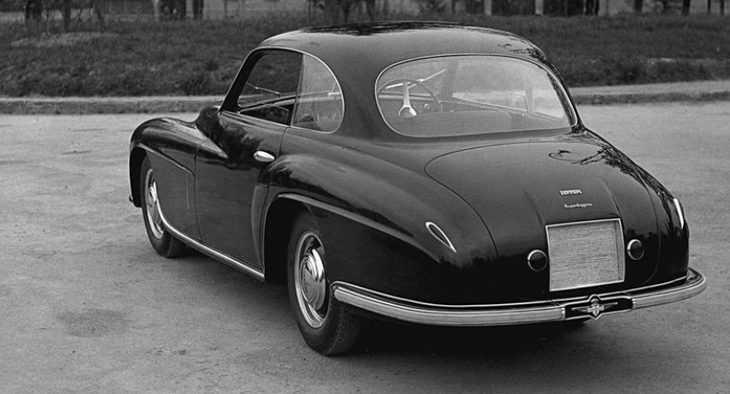
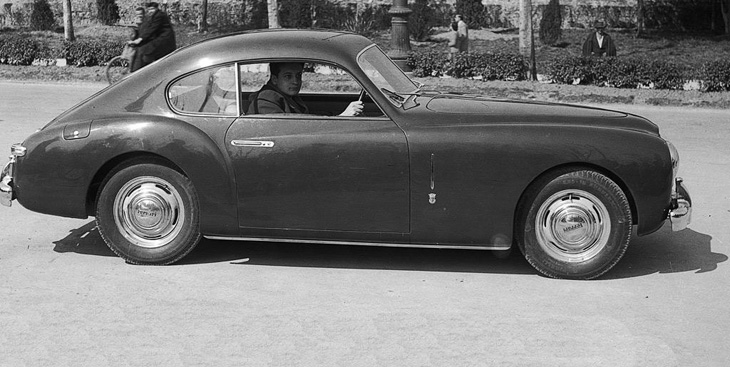
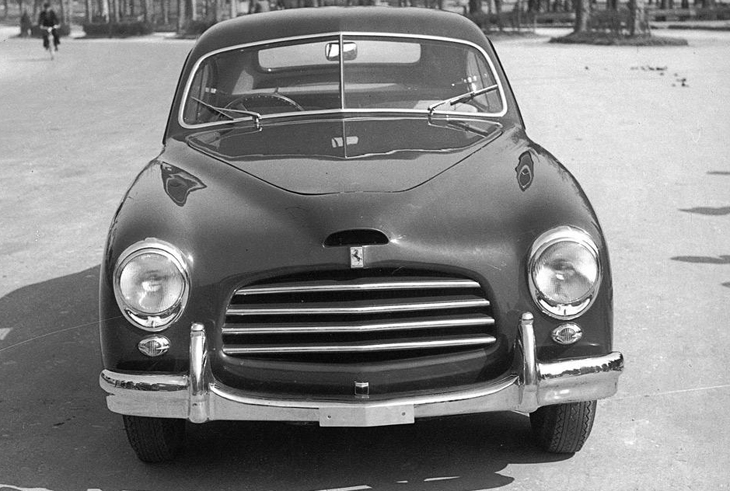
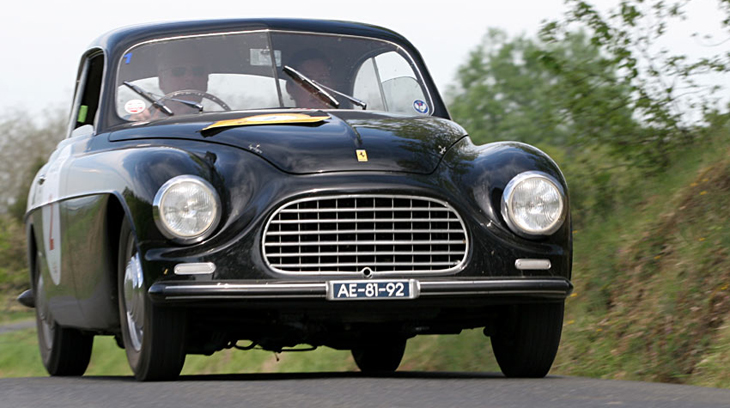
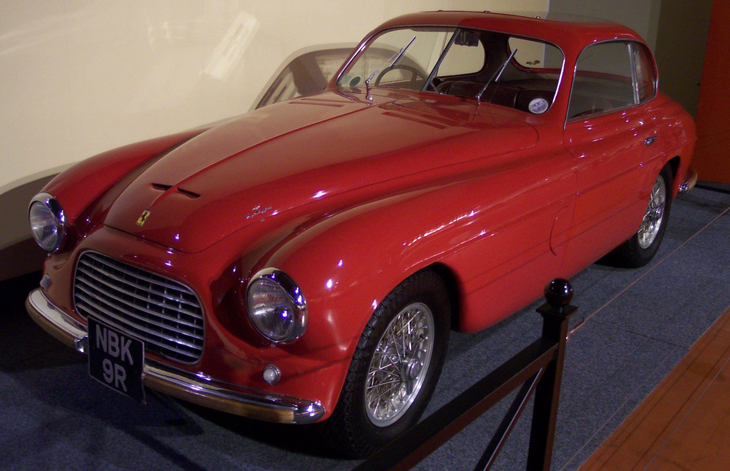
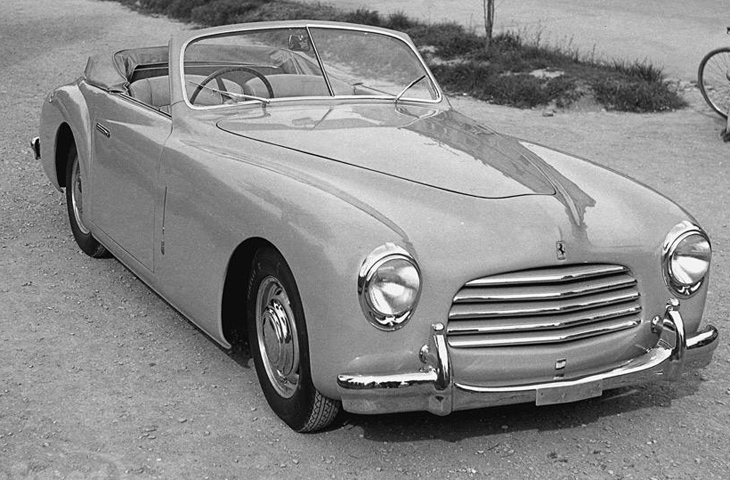
|
